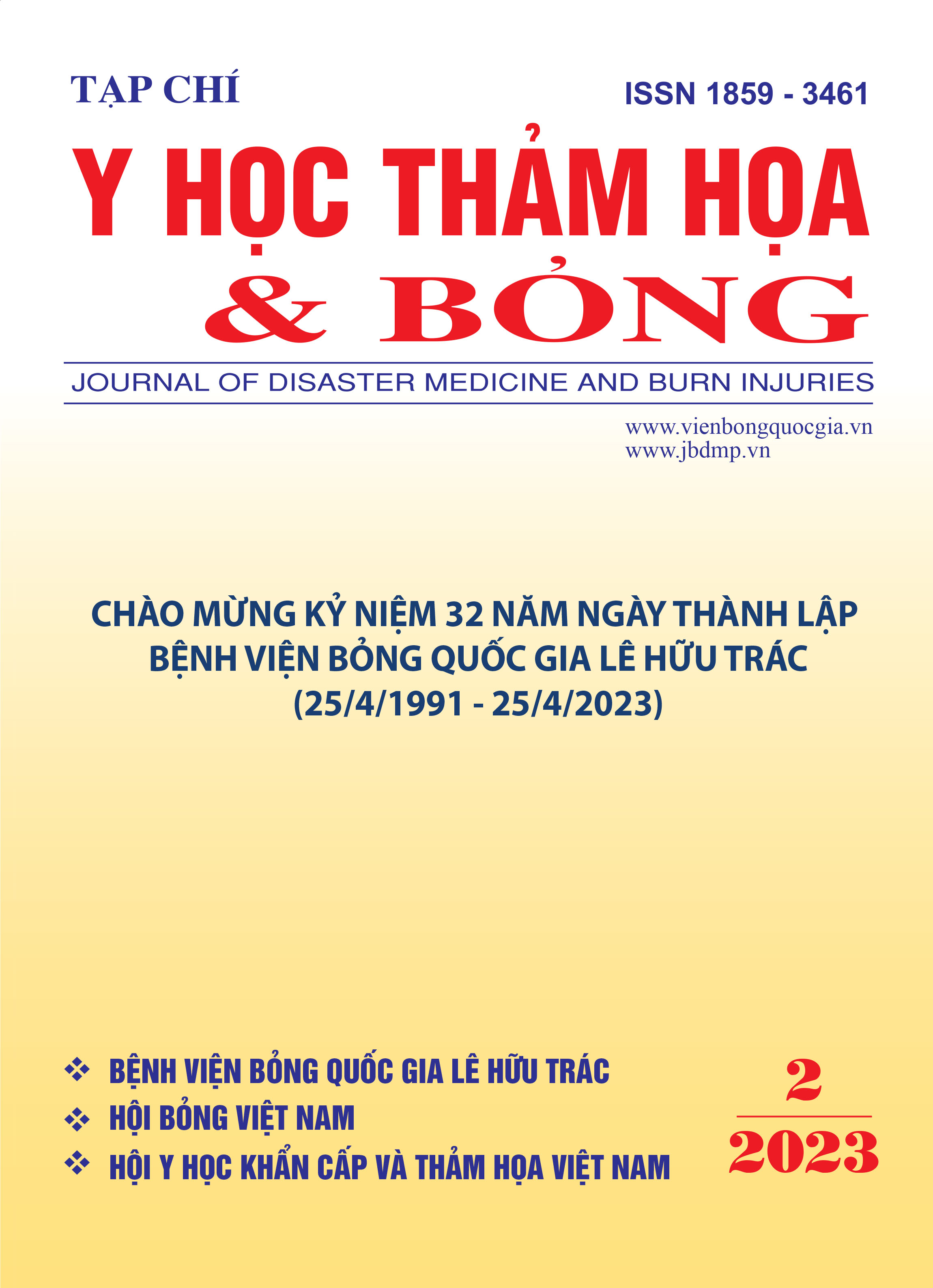Prognostic values of the arterial blood lactate combined with r-baux score and deep burn area for severe burn patients
Main Article Content
Abstract
Objectives: To evaluate the prognostic value of the arterial blood lactate combined with r-baux score and thickness of burn area to mortality in severe burn patients. Subjects and methods: A retrospective study was conducted on 241 burn patients over 16 years old with burn extent ≥ 20% total body surface area (TBSA) hospitalized within 24 hours postburn in the ICU, National Burn Hospital from 01/01/ 2021 - 31/10/2022. Patients were divided into two groups of survival and death, compared in terms of patient characteristics, burn features and arterial blood lactate levels on admission. Using ROC test to analyze the predictive value of mortality when combining the arterial blood lactate on admission with r-Baux score and thickness of burn area.
Results: The arterial blood lactate on admission was significantly higher (p < 0.001) in the death group compared with the survival group. Multivariate analysis showed that the arterial blood lactate on admission with r-Baux score and thickness of burn area was independently associated with mortality. Combining the arterial blood lactate on admission with r-Baux score and thickness of burn area has a very good predictive value of mortality (AUC = 0.923; sensitivity 81.97%; specificity 85.56%).
Conclusion: The predictive value of mortality of arterial lactate on admission in combination with the rBaux score and thickness of burn area is very good.
Article Details
Keywords
Arterial blood lactate, r-Baux, thickness of burn area
References
2. Steinvall I, Elmasry M, Abdelrahman I, El-Serafi A, Sjöberg F (2021). Addition of admission lactate levels to Baux score improves mortality prediction in severe burns. Scientific reports, 11(1):1-9.
3. Osler T, Glance LG, Hosmer DW (2010). Simplified estimates of the probability of death after burn injuries: extending and updating the baux score. Journal of Trauma and acute care surgery, 68(3):690-697.
4. Lutken P (1937). Mortality from burns. Ugesk Laeger, 99:409.
5. Farmer AW (1943) Experience with burns at the hospital for sick children. The American Journal of Surgery, 59(2):195-209.
6. Baux S (1961). Contribution à l'étude du traitement local des brûlures thermiques étendues, AGEMP.
7. Dokter J, Meijs J, Oen IM, van Baar ME, van der Vlies CH, Boxma H (2014). External validation of the revised Baux score for the prediction of mortality in patients with acute burn injury. Journal of Trauma and acute care surgery, 76(3):840-845.
8. Heng JS, Clancy O, Atkins J, Leon-Villapalos J, Williams AJ, Keays R, Hayes M, Takata M, Jones I, Vizcaychipi MP (2015). Revised Baux Score and updated Charlson comorbidity index are independently associated with mortality in burns intensive care patients. Burns, 41(7):1420-1427.
9. Williams D, Walker J (2015). A nomogram for calculation of the Revised Baux Score. Burns, 41(1):85-90.
10. Cochran A, Edelman LS, Saffle JR, Morris SE (2007). The relationship of serum lactate and base deficit in burn patients to mortality. Journal of burn care & research, 28(2):231-240.
11. Jeng JC, Jablonski K, Bridgeman A, Jordan MH (2002). Serum lactate, not base deficit, rapidly predicts survival after major burns. Burns, 28(2):161-166.


